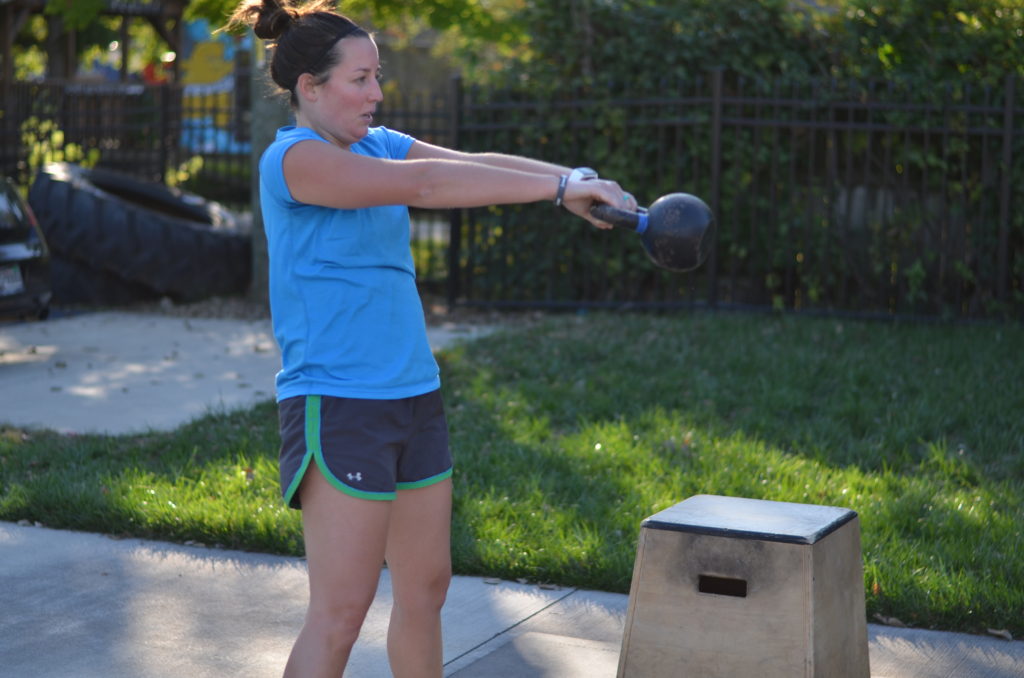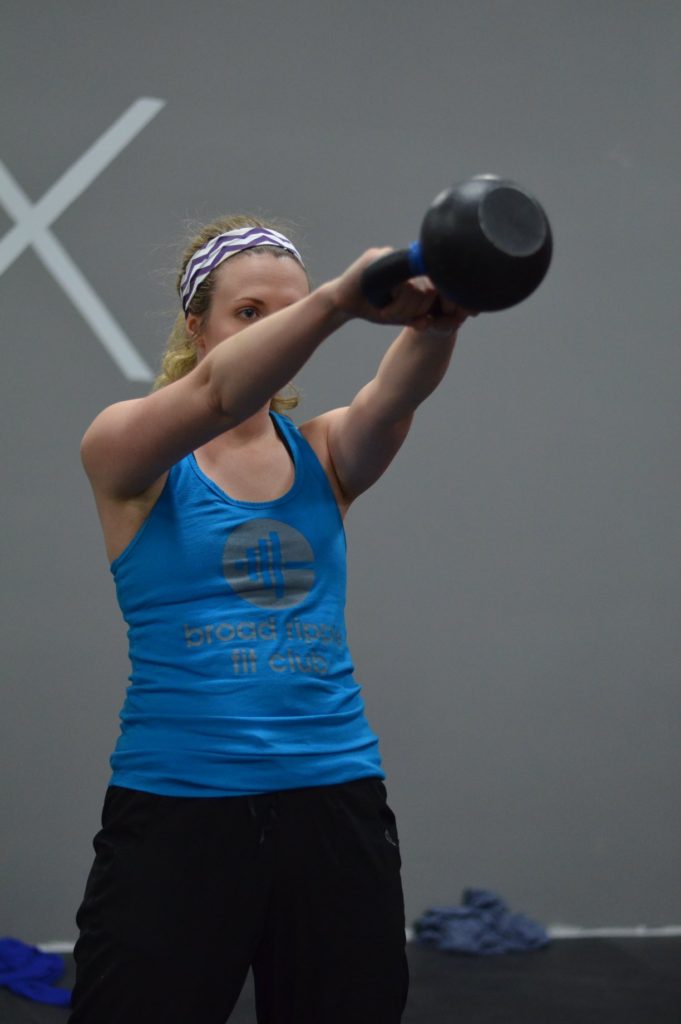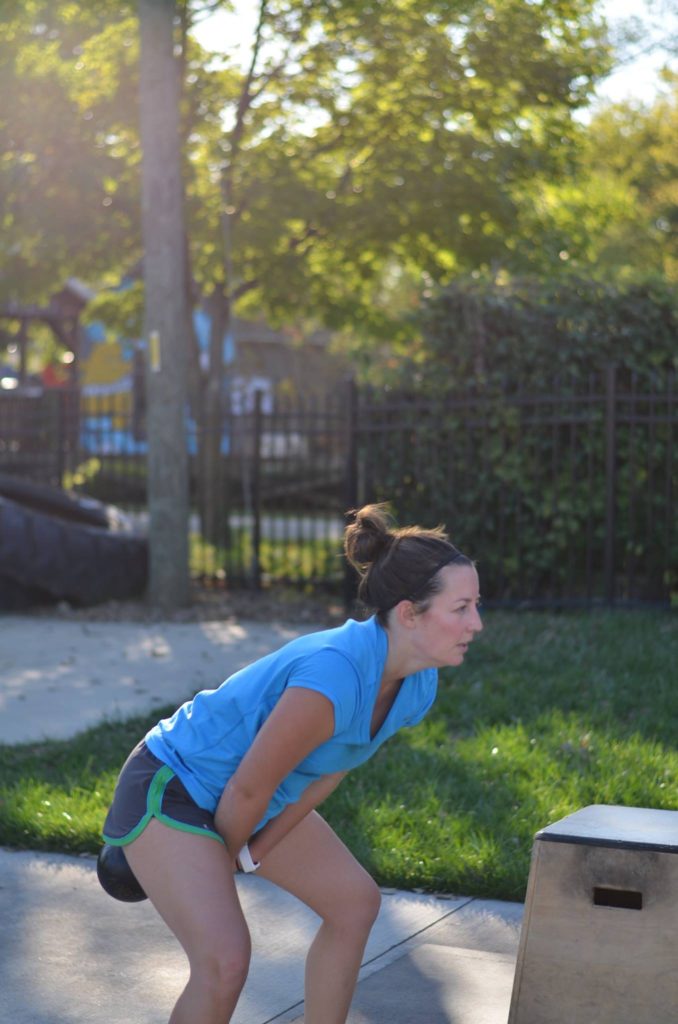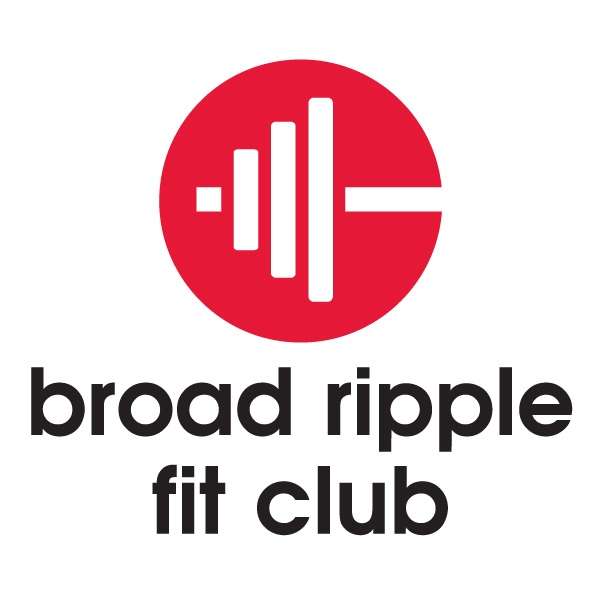Movement Spotlight: Kettlebell Swings

A kettlebell swing is one of the most versatile and beneficial, total body movements that we do in BRX. In a world that is so centered around sitting, it is incredibly easy to lose posterior and abdominal strength (hamstrings, glutes, core).
We are using virtually every muscle group when engaging in a kettlebell swing, making it one of the most functional movements – because when in real life are you NOT using your entire body to perform an action?

Performing a Kettlebell Swing
Hinge
A kettlebell swing is a HINGE, not a squat. This is one of the most common movement errors that we see in class. Rather than bending the knees and sending your hips down into a squat, we want to see a bend at the hips to send them back. The chest stays open, back stays flat. I’ll often cue members to squeeze or retract their shoulder blades in an attempt to maintain an unrounded back.
Feet are shoulder width apart and do not move during the movement. Weight is distributed between mid-sole and the heel of your foot.
Hike
With a full grip on the kettlebell with both hands (did we mention kettlebell swings are great for grip strength?) and a flat back/braced belly, the kettlebell is sent back between your legs to the “hike” position. Imagine you’re playing center on a football team and you are hiking the ball to the quarterback. That movement emulates the way to send the kettlebell back between your legs. Now, to get it back forward.

During this “hike”, the hamstrings become like rubber bands. They are loaded with tension (along with the glutes), and want to snap forward. Using all of that tension, there is a change of direction from the hinge, as you send your hips forward and squeeze your posterior chain to generate the maximum amount of power to send that kettlebell up and forward.
Once the hips are extended fully, it is the job of the arms to guide the kettlebell as it floats to the top of the movement. There should be barely any “pull” from your hands and arms during the movement, their only goal is to guide!
Pro Tip: If you are performing a Russian swing (eye level) and the bottom of the kettlebell is facing the ground, you are not using your posterior chain enough!
Coming Back Down
Arms guide the kettlebell back down to the hike position as your hips come back into their starting hinge/hike. Keep posterior chain and core engaged to encourage stability and balance.

